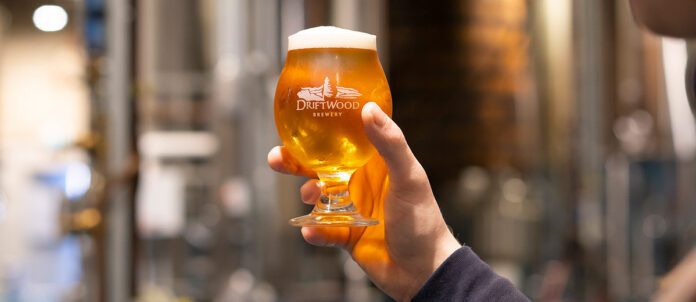By Roseline Victoria Vijayakumar
The brewing industry has seen a palpable shift in recent years. The craft-beer market is maturing, and the traditional stalwarts of beer production find themselves facing off against the rising tide of small breweries. There has been a lot of diversification into new experimental and trendy flavours and amidst this backdrop of change, the landscape of beer sales, marketing strategies and flavours has evolved.
However, one cannot write off traditional beers. Gary Lindsay, director of Marketing and Sales at Driftwood Brewery in Victoria, B.C. remarks, “It’s going to be a more secure place for traditional craft-beer styles. Everyone will keep trying to find their place and niche, but that has reached a saturation point. As far as new things, you’re seeing a bit of a decline overall, you’re seeing people looking to alternatives, whether it be marijuana, psychedelics, or just other options.”
This tug-of-war between the traditionally dominant breweries and the burgeoning craft-beer movement has been affected by the beer-tax system. Scott Simmons, president, Ontario Craft Brewers Association says, “Ontario’s beer-tax system is threatening the future of the sector. Right now, craft breweries are saddled with paying the highest craft-beer taxes in all of Canada. This is making breweries uncompetitive and we’re sadly seeing breweries close in some cases and being bought out by foreign-owned companies in others as a result. This needs to change to keep craft beer local.”
Rise of Independent Breweries
A noticeable facet of the beer landscape evolution is the rise of independent breweries. These breweries thrive on a hyper-local focus and aren’t restrained by the limitations faced by larger establishments, tapping into the consumer desire for unique experiences. However, this independence comes at a cost, Lindsay says. “Because of being independent, you are more prone to the cost increase, as the smaller you are, the more razor-thin your margins are. We’ve learned firsthand that we can’t afford to raise prices.”
The pandemic was a limiting blow as it forced the purchase trend to veer back toward classic styles. “COVID limited the opportunities to do new things because consumers weren’t able to shop, and they weren’t able to come out and have an experience with the beer. People were limited to grabbing what they knew and not taking a lot of risk,” says Lindsay.
Low and No-Alcohol Beers
Growing consumer preferences towards health and wellness have brought a demand for low-alcohol and no-alcohol beers. While this segment has come a long way, the road hasn’t been without pitfalls. Despite advancements in taste and quality, breweries continue to face challenges such as higher manufacturing costs and intense market-place competition. “The consumer always tells us that that’s what they want, but when [it’s more expensive] that doesn’t translate to sales,” says Lindsay.
Brewing Innovation
The quest to stand out drives breweries to innovate with unique flavours and ingredients.
“At Driftwood, we have a small pilot system. For us, it’s to try to do things with a new twist… developing different flavour profiles in beer comes down to a real simple ingredient that’s lost on most people [which] is yeast strains or lactobacillus and how much they can impact the flavour profile of a beer and then doing a hybrid style using something different,” says Lindsay.
He adds a word of caution regarding the longevity of initial excitement for a new beer style or flavour and emphasizes that though the enthusiasm may be high initially, it might not translate into sustained sales over time. He quips, “You can’t expect every beer to be the next big thing.”

















